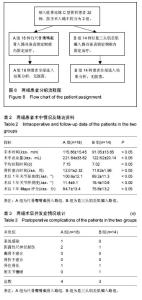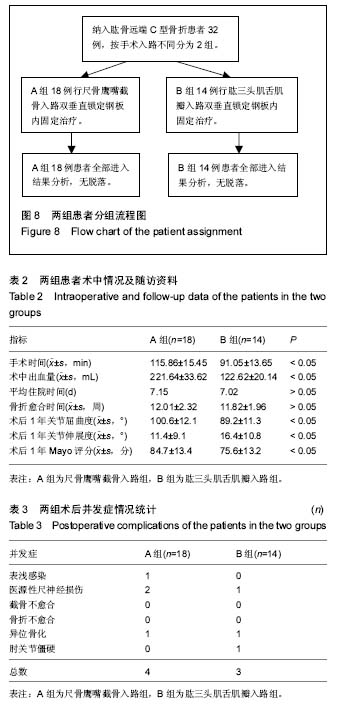| [1] 罗伟,姜保国. 肱骨髁间骨折的治疗进展[J]. 中华外科杂志, 2009,47(12):903-905.[2] Gupta R, Khanchandani P. Intercondylar fractures of the distal humerus in adults: a critical analysis of 55 cases. Injury. 2002; 33(6):511-215.[3] 杨延江,郭家良,杨宗酉,等. 2008年至2012年河北医科大学第三医院成人肱骨远端骨折的流行病学研究[J], 中华创伤骨科杂志, 2016, 18(3):237-240.[4] Nauth A, Mckee MD, Ristevski B, et al. Distal humeral fractures in adults. J Bone Joint Surg Am. 2011;93(7): 686-700.[5] Srinivasan K, Agarwal M, Matthews SJ, et al. Fractures of the distal humerus in the elderly: is internal fixation the treatment of choice? Clin Orthop Relat Res. 2005;434:222-230.[6] Zagorski JB, Jennings JJ, Burkhalter WE, et al. Comminuted intraarticular fractures of the distal humeral condyles. Surgical VS. nonsurgical treatment. Clin Orthop Relat Res. 1986;202: 197-204.[7] Robinson CM, Hill RM, Jacobs N, et al. Adult distal humeral metaphyseal fractures: epidemiology and results of treatment. J Orthop Trauma.2003;17:38-47.[8] 林小丰,艾尔肯•阿木冬. 肱骨远端骨折的肘后侧手术入路进展[J]. 医学理论与实践, 2015,28(1):30-32.[9] Bégué T. Articular fractures of the distal humerus. Orthop Traumatol Surg Res. 2014;100(1):55-63.[10] Voloshin I, Schippert DW, Kakar S, et al. Complications of total elbow replacement: a systematic review. J Shoulder Elbow Surg. 2011;20(1):158-168.[11] Mckee M. Posterior surgical approaches to the elbow: a comparative anatomic study. J Shoulder Elbow Surg. 2001; 10(4):380-382.[12] Dakouré PW, Ndiaye A, Ndoye JM, et al. Posterior surgical approaches to the elbow: a simple method of comparison of the articular exposure. Surg Radiol Anat. 2007;29(8):671-674.[13] Zhang C, Zhong B, Luo CF. Comparing approaches to expose type C fractures of the distal humerus for ORIF in elderly patients: six years clinical experience with both the triceps-sparing approach and olecranon osteotomy. Arch Orthop Trauma Surg. 2014;134(6):803-811.[14] Elmadag M, Erdil M, Bilsel K, et al. The olecranon osteotomy provides better outcome than the triceps-lifting approach for the treatment of distal humerus fractures. Eur J Orthop Surg Traumatol. 2014;24(1):43-50.[15] Obert L, Ferrier M, Jacquot A, et al. Distal humerus fractures in patients over 65: Complications. Orthop Traumatol Surg Res. 2013;99(8):909-913.[16] Ducrot G, Ehlinger M, Adam P, et al. Complex fractures of the distal humerus in the elderly: is primary total elbow arthroplasty a valid treatment alternative? A series of 20 cases. Orthop Traumatol Surg Res. 2013;99(1):10-20.[17] Chen RC, Harris DJ, Leduc S, et al. Is ulnar nerve transposition beneficial during open reduction internal fixation of distal humerus fractures? J Orthop Trauma. 2010;24(7): 391-394.[18] Helfet DL, Hotchkiss RN. Internal fixation of the distal humerus: a biomechanical comparison of methods. J Orthop Trauma. 1990;4(3):260-264.[19] Schemitsch EH, Tencer AF, Henley MB. Biomechanical evaluation of methods of internal fixation of the distal humerus. J Orthop Trauma. 1994;8(6):468-475.[20] Saragaglia D, Rouchy RC, Mercier N. Fractures of the distal humerus operated on using the Lambda® plate: report of 75 cases at 9.5 years follow-up. Orthop Traumatol Surge Res. 2013;99(6):707-712.[21] Fornasiéri C, Staub C, Tourné Y, et al. [Biomechanical comparative study of three types of osteosynthesis in the treatment of supra and intercondylar fractures of the humerus in adults]. Revue De Chirurgie Orthopédique Et Réparatrice De Lappareil Moteur. 1997;83(3):237-242.[22] Ring D, Jupiter JB. Fractures of the distal humerus. Orthopedics. 1992;15(7):103-113.[23] Sabalic S, Kodvanj J, Pavic A. Comparative study of three models of extra-articular distal humerus fracture osteosynthesis using the finite element method on an osteoporotic computational model. Injury. 2013;44(44 Suppl 3):S56-S61.[24] Mc Kee Md,Wilson TL.Functional outcome following surgical treatment of intra-articular distal humeral fractures through a posterior approach. J Bone Joint Surg Am. 2000;82-A(12): 1701-1707. [25] Mc Kee MD,Kim J.Functional outcome after open supracondylar fracture of the humerus.The effect of the suigical approach. J Bone Joint Surg Br. 2000;82(5):646-651.[26] Pajarinen J,Bjorkenheim JM.Operative treatment of type C intercondylar fractures of the distal humerus:results after a mean follow-up of 2 years in series of 18 patients. J Shoulder Elbow Surg. 2002;11(1):48-52. [27] Gofton WT,Macdermid JC.Functional outcome of AO type C diatal humeral fractures. J Hand Surg Am. 2003;28(2): 294-308. [28] Soon JL,Chan BK. Surgical fixation of intra-articular fractures of the distal humerus in asults. Injury. 2004;35(1):44-54. |

